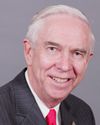To me it's pretty clear where we want to go on this. We want the same norms and conventions that apply to electoral financing in the House of Commons to apply in the Senate. It doesn't seem to be overly difficult to figure out how to get there.
The catch is that, since Bill C-20 would allow the election of senators in conjunction with provincial elections, it's not clear whether the federal financing legislation would apply. The provinces are not wildly out of line with federal legislation on this, but this is one of the soft points. If we rely on provincial elections, we're getting beyond the ability of Parliament to set election financing. That's why I think that in the long term provincial elections are a bad alternative.
But this committee would do well to tighten up what may be financial loopholes in the existing legislation. If they're closed, so much the better.




